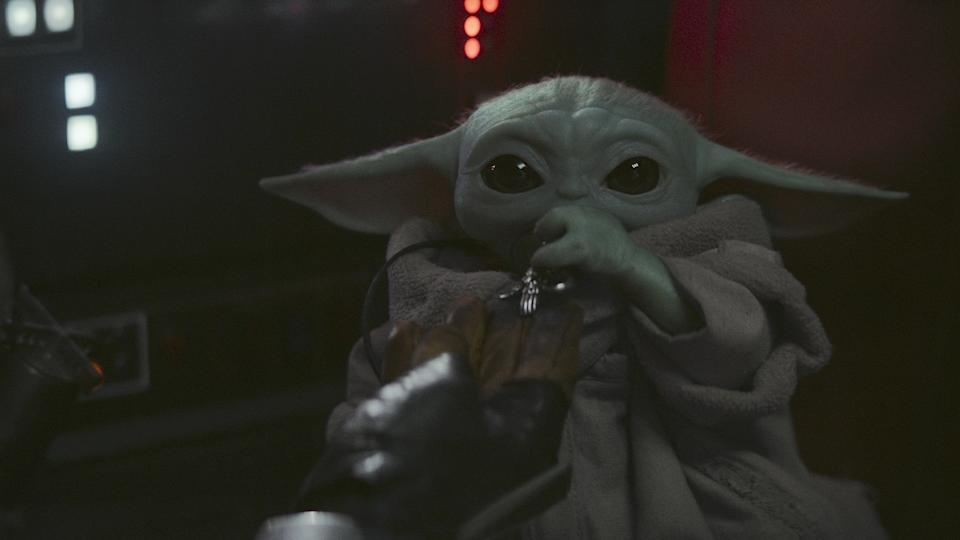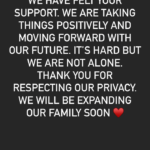It’s safe to say that Disney+ is the house that Baby Yoda built. When the Mouse House’s streaming service launched in November 2019, The Mandalorian was the first original series out of the spaceport, and its immediate success turbocharged not only Disney+, but also the Star Wars brand. And the key to that success was the pint-sized scene stealer introduced in the closing moments of the show’s premiere: Grogu, aka The Bounty aka The Chid aka Baby Yoda.
But in a revealing new Vanity Fair cover story about Disney’s long-term plans for the Star Wars brand, The Mandalorian‘s co-masterminds — Jon Favreau and Dave Filoni — reveal that Grogu almost wasn’t ready for primetime when they started working on the show. “Honestly, it’s something I never would’ve done because Yoda is Yoda,” Filoni admits about why he wasn’t sold on Favreau’s pitch for a younger, smaller version of the fan-favorite Jedi master.
“I think people now look back and think it was like a slam dunk, but we were very cautious,” Filoni continues. “The amount of measuring, especially in the first season, for how we were framing this kid took a lot of effort.” Adds Kathy Kennedy, who has overseen the Star Wars franchise since Disney purchased Lucasfilm in 2012: “It gave us some pause. [Jon] and Dave debated that quite ferociously.”
Part of the issue was settling on the right look for Grogu. Speaking with Vanity Fair, Favreau and Filoni describe how the character evolved during the trial and error concept art stage, which included early sketches of a Baby Yoda that was more feral than cuddly. “There were a lot of different looks that popped up, and then we got one that finally clicked,” recalls Favreau, before giving a shout-out to artist Chris Alzmann for eventually finding the right balance. “He had kind of a goofy, ugly look. We didn’t want him too cute.”
As teased in The Book of Boba Fett, Grogu will return alongside The Mandalorian‘s title character — played by Pedro Pascal — in Season 3 of The Mandalorian, set to premiere on Disney+ at the end of 2022 or early 2023. Before that, Kennedy plans to bring back some other familiar galactic faces for two new Star Wars limited series: Ewan McGregor and Hayden Christensen return as Obi-Wan Kenobi and Darth Vader, respectively, in Obi-Wan Kenobi, premiering May 27, while Diego Luna will reprise his Rogue One role as Cassian Andor in Andor, which launches later this summer. Both of those shows will take place in the nearly 20-year gap between the events of George Lucas’s prequel trilogy and the original trilogy.
Season 3 of The Mandalorian, meanwhile, once again fast-forwards the timeline to the 30-year period that separates the original trilogy and the sequel trilogy. After Mando and Grogu have their adventure, Rosario Dawson will pick up the lightsaber-shaped baton as Ahsoka Tano — an animated character who made her live action debut in The Mandalorian‘s sophomore season. Ahsoka also stars McGregor’s real-life partner, Mary Elizabeth Winstead, in an as-yet unspecified role, and the Scottish actor joked about how Star Wars has become a family business.
“Our little boy has been born into this massive Star Wars family,” McGregor says, referring to his and Winstead’s first child, who was born last year. “He will either embrace it or really go the other way. I don’t know. Maybe he’ll be a Trekkie!”
Perhaps the riskiest Star Wars series that Disney+ has on its plate is The Acolyte, a show that takes place 100 years before the events of The Phantom Menace — effectively preventing creator Leslye Headland and her writers from using any previously established characters. But the franchise’s minders know that kind of bold move is essential if Star Wars is ever going to outgrow the Skywalker Saga that’s defined the series for 45 years.
“We’re taking a look at the political and personal and spiritual things that came up in a time period that we don’t know much about,” Headland explains. “My question when watching The Phantom Menace was always like, ‘Well, how did things get to this point?’ How did we get to a point where a Sith lord can infiltrate the Senate and none of the Jedi pick up on it? Like, what went wrong? What are the scenarios that led us to this moment?”
One of the reasons why Kennedy wants to cultivate a new collection of Star Wars heroes and villains is due to the fact that recasting existing characters didn’t work out so well. After 2018’s Solo: A Star Wars Adventure — which featured Alden Ehrenreich as the younger version of Harrison Ford’s beloved smuggler — crashed and burned, the franchise consciously moved away from finding new actors to play legacy characters.
[embedded content]
For example, Mark Hamill was brought back to play Luke Skywalker in The Mandalorian and The Book of Boba Fett, and both times the 70-year-old actor had his appearance digitally de-aged to resemble his younger self. Kennedy suggests that will be the approach that subsequent Star Wars shows will follow if and when we see the adult versions of Luke, Leia and Han again. (A young actor, Grant Feely, will be playing Luke as a child in Obi-Wan Kenobi.) “There should be moments along the way when you learn things,” says Kennedy about the dramatic lessons gleaned from Solo. “Now it does seem so abundantly clear that we can’t do that.”




